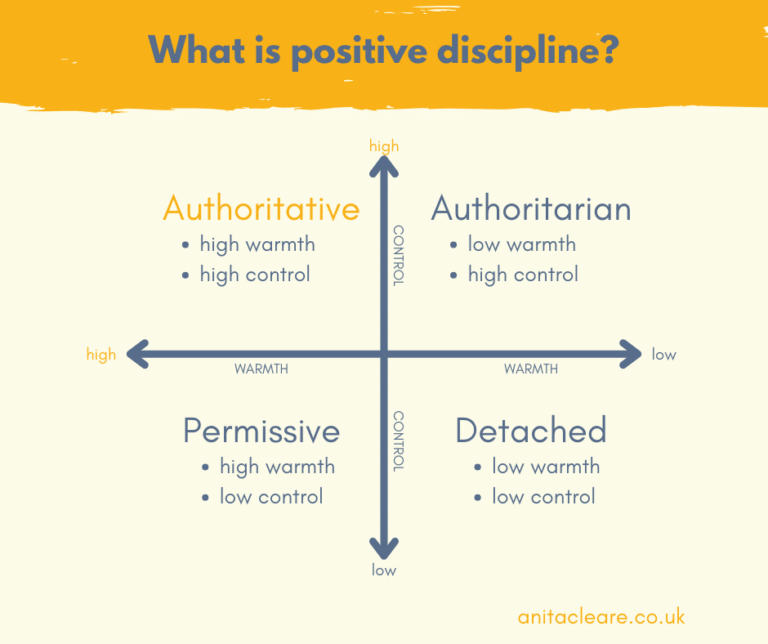Positive discipline: warmth plus boundaries
When it comes to parenting styles, research consistently shows that children who are parented with a blend of warmth plus boundaries are most likely to experience positive outcomes in all areas of their lives.
Positive parenting is an approach to parenting which uses positive discipline strategies to empower parents to set boundaries in ways which encourage and nurture children.
The word ‘discipline’ can have negative connotations for some people. To some, it might suggest using punishments or responding negatively when children get things wrong. For me, positive discipline is the exact opposite of this. It’s about developing a warm and nurturing relationship with our children, drawing clear, consistent and age-appropriate boundaries, and teaching children the skills they need to be able to self-manage those boundaries.
What does this look like in practice? Here are my top five tips for implementing positive discipline:
Use your attention smartly
Children tend to repeat behaviour that gets our attention so make sure you are paying most attention to when children get it right, and dial down the drama when they get it wrong. Focus on the positives. Catch them being good (or just making some progress towards that) and use your attention to positively reinforce this. Be warm, be sincere. Be really pleased when they get it right and they will be more motivated to do it again!
If your child persists in doing something despite your boundary, it might be that the extra attention you are paying to that situation is acting as an accidental reward. (Or, maybe, your child doesn’t have the skills yet to do things differently and you need to step back and teach them how).
Set clear ground rules
Ground rules are a fantastic positive discipline strategy for helping children implement new behaviour and for maximising their chances of staying the right side of a boundary.
Ground rules should always be positive (e.g. “Use kind words” rather than “Don’t be mean”) and the focus is on responding positively when get it right rather than catching them getting it wrong. (See Ground rules: Catch them being good!).
You can use ground rules as a temporary way to tackle entrenched behaviour, as an enabler for difficult times of the day, or as a one-off when you are out and about to avoid potential flashpoints.
Be consistent
Consistent responses help children learn. Consistency really matters. Unfortunately, consistency requires a lot of effort from parents. So, use your energy smartly. Focus on the boundaries that are most important, and commit to responding consistently for at least a month (to allow change to happen). You can keep a diary to help you do this and to track progress, if that helps.
Young children learn so much through what happens as a result of their actions, so don’t be afraid to use natural or logical consequences to discourage undesirable behaviour and guide children in a different direction. For example, removing a toy they are using dangerously or inappropriately, or insisting that they help clean up a mess they have made before returning to play. As soon as you can, remember to catch them being good again and always maintain that balance of warmth plus boundaries.
Stay calm
I know that’s easy to say and sometimes hard to do, but managing your own emotions and staying calm is essential for positive discipline. Boundaries should always be set and reinforced calmly. If you are prone to losing your temper or getting emotional (and, let’s face it, which parent isn’t?!) try to spot the triggers that make you lose your cool. There might be certain situations, or times of the day, where you are more likely to shout or snap. Be honest with yourself about these and explore ways to manage your stress better. (See How not to shout).
Staying calm isn’t about being infinitely patient. If your child is not listening to you, don’t just keep on asking and asking. It’s much easier to stay calm if you step in early with a positive discipline strategy to change the situation, rather than allowing your frustration to grow. (See The secret of calm parenting).
Reflect and review
Parenting isn’t really something we ‘do’ to children, it’s a relationship between us and our child. If a strategy isn’t working for you (or has stopped working), don’t just plough onwards regardless. Stop and reflect on what might be going on.
Good parenting isn’t about getting it right all the time. But it is about recognising when we are getting it wrong and taking a thoughtful approach to how we might work with our child differently.
Want to learn more? We offer an online positive parenting course alongside 1:1 support sessions with a parenting coach.







Leave a Reply